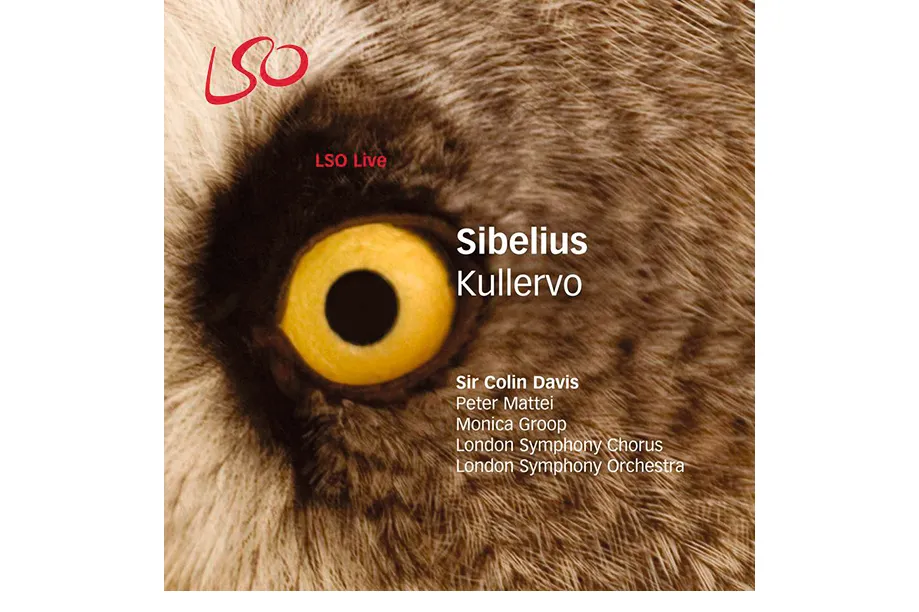Sibelius was 58 years old when he conducted the Royal Stockholm Philharmonic Orchestra in the premiere of his Seventh Symphony in March 1924, just short of 25 years since the premiere of his First Symphony. The intervening years had seen him battle with alcoholism and successfully emerge from an operation for throat cancer and, while feted both in Finland and abroad, his financial situation was rarely stable. Only two major orchestral works – The Tempest and Tapiola – would follow the Seventh Symphony, though he lived for a further three decades.
What's the best recording of Sibelius's Symphony No. 7?
Osmo Vänskä
Minnesota Orchestra
BIS BIS2006

Osmo Vänskä’s first recorded Sibelius cycle, with Finland’s Lahti Symphony Orchestra, was hailed as a major achievement when it appeared over 20 years ago. But this more recent Seventh, recorded in 2016, takes the insights to a new level of perfection. Vänskä’s approach can seem dauntingly literal: he’s a great believer in following Sibelius’s written instructions down to the last detail. But in this case the letter really is the gateway to the spirit. So many conductors seem to struggle with the Seventh Symphony’s finely engineered transitions of tempo and texture. Listening to Vänskä, you might conclude that all you have to do is take Sibelius at his word and the rest will follow.
But of course there’s a good deal more to it than that. Listening to the opening bars, I find myself asking, how does he make something as simple as a rising crescendo scale sound so eloquent, so full of potential dramatic energy? In the rapt hymn for strings that follows there’s a sense of a controlled, steady rise in background intensity, and yet the foreground is full of finely featured expressive detail – each tiny phrase (I almost said ‘word’) counts. The trombone theme is thrilling in each one of its appearances: through the swirling storm clouds at the heart of the symphony, but best of all at the stunning apotheosis, the singing building majestically, despite the feeling that earth and sky are convulsing around it, and culminating in a spine-chilling whoop from the horns. But there’s also freshness and lightness of touch when needed. Stravinsky praised the ‘Northern Mediterranean’ quality of Sibelius’s melodic writing; the Seventh Symphony’s second dance episode could likewise be described as Nordic Viennese in this finely engineered recording.
Best of all, though, are the final few moments. After the final climax the world holds its breath, then doubt and anguish are dispelled by one last warm echo of the trombone theme. Then comes the final crescendo, in which the two-note falling motif is stretched out in a kaleidoscope of changing orchestral colours: low woodwind, horns, low strings, then violins. No need to worry that the American players might not be able to match the Finns when it comes to colours: no one today understands Sibelius’s paradoxical sound palette – austere yet also rich and complex – better than Osmo Vänskä.
Three other great recordings of Sibelius's Symphony No. 7
Colin Davis
LSO Live LSO0074

Davis’s approach in his third recording of this symphony is more Brucknerian in its grand inevitability, but there’s still room for plenty of Sibelian drama and volatile passion. In fact this is overall a very warm performance, in keeping with the expressive generosity of the ‘late’ Davis style. It brings extra charm to the waltz-like second dance episode, and extra poignancy to the coda. Davis makes the ending more affirmative, less ambiguous that the scrupulously literal Vänskä, but it’s very moving.
Herbert von Karajan
DG 4395272

The sense of personal investment in Karajan’s Sibelius comes across powerfully. And as in the best Karajan performances, the structural engineering is superb – how anyone could listen to this and deny that Sibelius was a top-class symphonic thinker is beyond me. It’s a very Wagnerian approach: ripe, sumptuous orchestral sound from the Berlin Philharmonic (one of the best orchestras in the world), gloomy atmospheric density, swirling mists and swollen opaque floodwaters, and many listeners will miss the Nordic fresh air of Vänskä. But it’s so compelling and emotionally stirring that, in the end, the best policy is to surrender.
John Barbirolli
Warner 2564647967

For impassioned eloquence, and for a compelling sense of personal crisis that may well underlie this music, John Barbirolli, in his 1966 Hallé version, is unequalled, and the recording still sounds remarkably good despite a slight edge to the treble. The last echo of the trombone theme sounds more like an anguished leave-taking than a grateful farewell in this performance. And at no point does of any of this feel like specious manipulation: everything sounds as though it is being discovered from within the notes.
And one to avoid…
Neeme Järvi has always had a wonderful poetic feeling for the colours and textures of Sibelius’s music. But he’s not always the most reliable of conductors when it comes to engineering large-scale structures. Järvi’s Seventh is more impressive in its parts than as a whole, and there are moments, like the sudden jerk forwards at the beginning of the vivacissimo, where he loses the thread. Once that’s broken, so too is that ‘wide and powerful current’. It’s too great a loss.
Read our reviews of the latest Sibelius recordings hereFind out more about Sibelius and his works here
